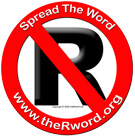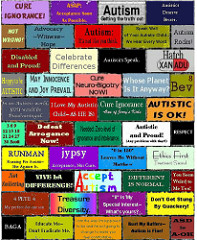Today is International Women’s Day. This year’s theme is: “Ending Impunity for Violence against Women and Girls”
People with disabilities have a variety of difficulties across their lives, not just from the intrinsic problems associated with the disability, but also the handicaps they face socially. Disabled people are much less likely to finish secondary school, even less likely to go on to further education in university, have more difficulties acquiring jobs compared to their equally qualified non-disabled peers, and therefore generally earn less. Around the world, women in general also are much less likely to finish secondary school, even less likely to go on to further education in university, have more difficulties acquiring jobs compared to their equally qualified non-disabled peers, and therefore generally earn even less.
Not surprisingly disabled women fare worse than disabled men. But hey, you don’t have to take my word for it. According to a report by the Independent Living Institute, disabled women:
- Data referring to the E.U. shows that percentage of employment in men without disability is 76% versus 36% in disabled men. Regarding women, the percentages vary from 55% in non-disabled to 25% in disabled women.
- Studies done on specific groups (autistic, for example) show that they are more inclined to remain in institutions for longer periods of time than men.
- There are a lot of barriers that make access to birth control and family planning very difficult, such as physical barriers, communication barriers etc.
- In hospitals disabled women are used as models for trainee doctors, without previously asking them for their permission. Videos and slides are taken of disabled women to be used as teaching aids without any control over their use.
- There are permanent debates on the role women are supposed to play, and that assigned to disabled persons. As a result, while women in general are pressured by society to motherhood, disabled women are forced into not having children, and this many times leads to unauthorised sterilisation, or denial of adoption on the basis of the “incapacity of the mother” to take care of them adequately.
In theme with this year’s International Women’s Day, there’s also the issue of violence against women. Again, women who are disabled fare worse off than those who are not. Furthermore, it is even more difficult for women with disabilities to recognise, prevent or stop such problems.
The report goes on to describe the various kinds of violence that happen to women with disabilities. These are described as Active Violence (physical abuse, emotional abuse, sexual abuse, economic abuse) and Passive Violence (physical neglect, emotional neglect). These can be manifested in the following ways:
Physical abuse:
Any direct or indirect action that can damage the life, welfare or health of disabled women, provoking pain, unnecessary suffering or health deficiency.
Manifestations:
* Aggressions in different parts of the body
* Unjustified administration of drugs.
* Restrictions of mobility.
Alert Signs:
* To be found in sedative or nervous conditions.
* Motor dysfunction not due to their disability.
* Signs of physical violence: marks in wrists and ankles, fractures, bites, internal damages, burns, etc.
* Detriment in their remains of physical capacity.Emotional abuse:
Behaviour model that results from damage to the welfare and emotional balance of a disabled woman.
Manifestations:
* Isolation, prohibiting or limiting the access to means of communication (phone, mail..), to information and to keep in contact with other relatives and neighbours.
* Oral cruelty, by means of insults, constant criticism, making fun of their body, punishments in the presence of others.
* Over protection.
* Speaking, deciding or giving opinions in her name.
* Intimidation, and /or emotional blackmail.
Alert Signs:
* Depression.
* Communication and interrelation difficulties.
* Insecurity, and low self-esteem.Sexual abuse:
Actions that are a sexual aggression towards disabled women, and can produce physical or emotional harm.
Manifestations:
* Rape.
* Sexual vexation or humiliation.
Alert Signs:
* Marks or/and injuries in genitals.
* Fear to relate with certain people.
* Undesired pregnancies.
* Venereal diseases.Economical abuse:
Actions that pursue the loss of control and rights on properties, money or family shared inheritances. The use of the image of a disabled woman against her will, to gain money for third persons, is also considered economic abuse.
Manifestations:
* The use of disabled girls or women in mendacity.
* Employing disabled women in poorly paid jobs usually linked to clandestine employment.
* Limiting the access to information and management of personal economy.
* The use of money as a sanction.
* The family denies the access to external economic resources (jobs, grants..).
Alert Signs:
* Depending too much on others.
* Little expectations regarding herself and her personal or professional projection.Physical neglect:
It is understood as such, the denial or privation of the basic aspects to keep the body in good shape, in relation with health, hygiene and image.
Manifestations:
* Negligence in feeding.
* Personal carelessness.
* Neglecting hygienic measures.
* Lack of supervision.
Alert Signs:
* Malnutrition.
* Frequent illnesses not caused by disability.
* Inadequate cloths regarding sex, climate, and the persons’ handicaps.
* Dirty clothes.
* Long periods of time without supervision.
* Physical problems worsen due to lack of treatment.Emotional neglect:
Those actions that deny or deprive attention, consideration and respect towards disabled women.
Manifestations:
* Ignoring their existence.
* Giving no value to their opinion.
* Feeling ashamed about them.
Alert Signs:
* Lack of interaction.
* No motivation concerning their personal development.
* Scarce or no participation in family or social activities.
The study came up with the following conclusions:
- Many disabled women see themselves as subjects of maltreatment and abuse, while society ignores the problem.
- Many disabled women do not see themselves subjects of violence, because they consider these situations habitual in their lives and associated with disability.
- Disability is a risk factor when suffering abuse and maltreatment situations, which added to the fact of being a woman, increases the risk to higher rates than those of the violence suffered by women in general.
- Women with sensorial, learning, and communication problems, are more likely to suffer abuse and violence.
- Not having the traditional female roles assigned contributes to lower self-esteem and increases vulnerability, elements that favour becoming an object of violence.
- Violence against disabled women shares common characteristics with the female collective, but has specific characteristics as well.
- Most professionals in charge of counselling and interventions in maltreatment to women ignore that many disabled women are in the same situation. Either because information does not reach them, or because they do not typify as violent acts those they believe associated to disability.
- Depending on others to cope in daily life increases the risk of being objects of violent actions. This risk is believed lower when personal assistance is given with former professional training and psychological aptitude.
- Violence against disabled women has more to do with the fact it is considered an extenuating circumstance that these actions are perpetrated against “a faulty being”, than on using a woman’s body as a demonstration of power and control.
The report goes on to describe specific details from several countries. Near the end, the authors describe some of the difficulties that disabled women face when trying to extricate themselves from abusive situations:
It is extremely difficult for any abused woman to leave a situation of abuse. A woman is hit by a husband or a partner an average of 35 times before she calls the police. Battering undermines self-esteem and can make a woman feel she is somehow responsible for her own abuse. For a woman with a disability, this situation is even more difficult. She may be dependent on her abuser for affection, communication and financial, physical and medical support. If she reports the abuse, she may risk poverty and loss of housing and support. She may fear she will not be heard or believed is she speaks out. She may face further violence, institutionalisation, or loss of her children if she seeks help. She may not have access to information about existing support services for victims of violence. Even if she has this information, many sources of support may not be accessible. She may not be able to contact the police or women’s shelters because they do not have communication devices as telecommunication devices for the deaf. She may not be able to physically leave her situation because of a lack of accessible transportation. Her lack of options may leave her feeling so powerless and despairing that suicide seems the only viable choice. And if she seeks help in dealing with suicidal thoughts or attempts, she is unlikely to find counselling which takes account of her own reality. And so she is left isolated and possibly suicidal.
Just as the problems are multifaceted, so are the solutions. The report recommends:
- Abusive behaviour needs to be acknowledged as a serious social and in some cases criminal problem, rather than being considered a private matter.
- Protocols need to be developed for institutions to screen potential employees and volunteers.
- Protocols need to be developed to address the abuse that occurs in institutional settings.
- Community living alternatives need to be made available for women with disabilities.
- Courses need to be made accessible and available to women with disabilities (in self-defence, assertiveness training, and sex education).
- Appropriate suicide consoling which meets the special needs of women with disabilities needs to be made available.
- Transition houses and other existing support services need to be made accessible, and frontline workers in shelter facilities need to be sensitised to the needs of women with disabilities.
- Women with disabilities need to be hired to provide this training and to work in these centres and
- Women in all communities need to work together develop a co-ordinated approach to dealing with the abuse of all women.








Shumiala Asif (Chairperson SDW) said,
14 December 2007 at 5:59
Dear Andera’s,
This is Shumiala Asif founder and present chairperson SDW Pakistan. SDW stands for Society for Disabled Women Pakistan, the society work for and with disabled women in specific in rural and backward areas.
I have read your report on International Disabled Women Day, I am happy that you specifically mentioned about women with disabilities, this is bitter truth that WWD’s are totally neglected, disadvantaged, depressed and living isloated life in poor countries.
I am not agree with EU report that 25% of disabled women are in employment. In south asia or in Pakistan it is 1% or less you hardly see WWD’s in emplyment. Pakistan has mojority of its population living in rural areas it is more than 70 %. in our rural areas women with disabilities are totally neglected for primary level of education or for basic health facilities or for free mobility opportunities.
this is SDW Pakistan celebrated International Disabled Womens Day in very backward area near Border between Pakistan and India.
The desert area where thousands of people living in truama and need psychological support for thier rehabilitation.
It was good to read your report and hope we can share more information regarding disabled women issues in specific.
Shumiala Asif
Chairperson SDW
Pakistan
andrea said,
21 June 2007 at 14:49
What in the world do you find funny, Salome?
Salome said,
21 June 2007 at 14:44
I cried and laughed when i read this page.
And, further « Midlife And Treachery said,
25 March 2007 at 17:24
[…] March 25th, 2007 at 10:24 am (disabled women, Feminism) Found at “Falling Off My Pedestal….a link to this gem. […]
Disability Blog Carnival - 22 March 2007 » All About aBILITIES said,
22 March 2007 at 8:20
[…] International ^DISABLED Women’s Day posted at Andrea’s Buzzing About…. […]
CMW said,
13 March 2007 at 3:42
My sister died just three days before Disabled Womens Day this year. After a long 15-year campaign of abuse by control, neglect, and isolation, her life ended at only 33 years old. I just want to thank you for trying to educate the public about this problem. In the case of my sister, she was a target due to the social security/ disability checks she received. The bonus for her abuser was the total control he was eventually able to assert over her. For example, in order to maintain independence, she needed to push herself around in her wheelchair daily to keep up her arm strength. He moved her out of the handicapped-accessible apartment into a place that was up 3 flights of stairs and had doorways too narrow for her wheelchair. That was just step 1 of gaining control over her entire life. He moved her away from her family, wouldn’t let her speak to us, never let her be home alone, and kept her from the prying eyes of doctors and clergy. When she died (of an infection related to bedsores and neglect), he had complete and total control over her, body and mind. Please continue to get the word out and help others.
laurentius-rex said,
10 March 2007 at 18:51
Yes but every day is International Laurentius Rex day, and the days inbetween as well :)
I have always thought that there is a plethora of international days of this and that and with only 365 of them in most years each day probably stands for any number of causes.
I think if you are into any kind of awaresness raising campaign it is one you should practice constantly.
Remember a Woman is for life not just for Christmas :)